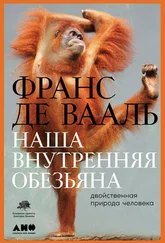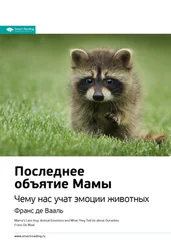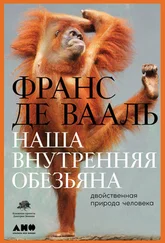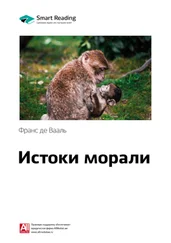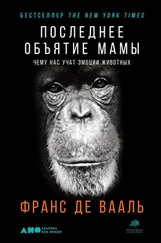Dehaene, S., and L. Naccache. 2001. Towards a cognitive neuroscience of consciousness: Basic evidence and a workspace framework. Cognition 79:1–37.
Descartes, R. 2003 [orig. 1633]. Treatise of Man . Paris: Prometheus.
Dimberg, U., P. Andréasson, and M. Thunberg. 2011. Emotional empathy and facial reactions to facial expressions. Journal of Psychophysiology 25:26–31.
Dimberg, U., M. Thunberg, and K. Elmehed. 2000. Unconscious facial reactions to emotional facial expressions. Psychological Science 11:86–89.
Douglas, C., et al. 2012. Environmental enrichment induces optimistic cognitive biases in pigs. Applied Animal Behaviour Science 139:65–73.
Dugatkin, L. A. 2011. The Prince of Evolution: Peter Kropotkin’s Adventures in Science and Politics . CreateSpace.
Easterlin, R. 1974. Does economic growth improve the human lot? In Nations and Households in Economic Growth: Essays in Honor of Moses Abramovitz . Ed. M. Abramovitz, P. David, and M. Reder, 89–125. New York: Academic Press.
Eibl-Eibesfeldt, I. 1973. Der vorprogrammierte Mensch: Das Ererbte als bestimmender Faktor im menschlichen Verhalten . Vienna: Verlag Fritz Molden.
Ekman, P. 1998. Afterword: Universality of emotional expression? A personal history of the dispute. In Darwin , ed. P. Ekman, 363–93. New York: Oxford University Press.
Ekman, P., and W. V. Friesen. 1971. Constants across cultures in the face and emotion. Journal of Personality and Social Psychology 17:124–29.
Essler, J. L., W. V. Marshall-Pescini, and F. Range, 2017. Domestication does not explain the presence of inequity aversion in dogs. Current Biology 27:1861–65.
Evans, T. A., and M. J. Beran. 2007. Chimpanzees use self-distraction to cope with impulsivity. Biology Letters 3:599–602.
Fehr, E., H. Bernhard, and B. Rockenbach, 2008. Egalitarianism in young children. Nature 454:1079–83.
Fessler, D. M. T. 2004. Shame in two cultures: Implications for evolutionary approaches. Journal of Cognition and Culture 4:207–62.
Filippi, P. et al. 2017. Humans recognize emotional arousal in vocalizations across all classes of terrestrial vertebrates: Evidence for acoustic universals. Proceedings of the Royal Society B 284:20170990.
Finlayson, K., J. F. Lampe, S. Hintze, H. Würbel, and L. Melotti. 2016. Facial indicators of positive emotions in rats. PLoS ONE 11: e0166446.
Flack, J. C., L. A. Jeannotte, and F. B. M. de Waal. 2004. Play signaling and the perception of social rules by juvenile chimpanzees. Journal of Comparative Psychology 118:149–59.
Foerster, S., et al. 2016. Chimpanzee females queue but males compete for social status. Scientific Reports 6:35404.
Fouts, R., and T. Mills. 1997. Next of Kin . New York: Morrow.
Frankfurt, H. G. 1971. Freedom of the will and the concept of a person. Journal of Philosophy 68:5–20.
–. 2005. On Bullshit . Princeton, NJ: Princeton University Press.
Fruteau, C., E. van Damme, and R. Noë. 2013. Vervet monkeys solve a multiplayer “forbidden circle game” by queuing to learn restraint. Current Biology 23:665–70.
Fruth, B., and G. Hohmann. 2018. Food sharing across borders: First observation of intercommunity meat sharing by bonobos at LuiKotale, DRC. Human Nature 29:91–103.
Fry, D. P. 2013. War, Peace, and Human Nature: The Convergence of Evolutionary and Cultural Views . Oxford: Oxford University Press.
Furuichi, T. 1997. Agonistic interactions and matrifocal dominance rank of wild bonobos ( Pan paniscus ) at Wamba. International Journal of Primatology 18:855–75.
–. 2011. Female contributions to the peaceful nature of bonobo society. Evolutionary Anthropology 20:131–42.
Gadanho, S. C., and J. Hallam. 2001. Robot learning driven by emotions. Adaptive Behavior 9:42–64.
Garcia, J., D. J. Kimeldorf, and R. A. Koelling. 1955. Conditioned aversion to saccharin resulting from exposure to gamma radiation. Science 122:157–58.
Gazzaniga, M. S. 2008. Human: The Science Behind What Makes Your Brain Unique . New York: Ecco.
Gesquiere, L. R., et al. 2011. Life at the top: Rank and stress in wild male baboons. Science 333:357–60.
Ghiselin, M. 1974. The Economy of Nature and the Evolution of Sex . Berkeley: University of California Press.
Godfrey-Smith, P. 2016. Other Minds: The Octopus, the Sea, and the Deep Origins of Consciousness . New York: Farrar, Strauss and Giroux.
Goldstein, P., I. Weissman-Fogel, G. Dumas, and S. G. Shamay-Tsoory. 2018. Brain-to-brain coupling during handholding is associated with pain reduction. Proceedings of the National Academy of Sciences USA 115:201703643.
Goleman, D. 1995. Emotional Intelligence . New York: Bantam.
Goodall, J. 1986a. The Chimpanzees of Gombe: Patterns of Behavior . Cambridge, MA: Belknap.
–. 1986b. Social rejection, exclusion, and shunning among the Gombe chimpanzees. Ethology and Sociobiology 7:227–36.
–. 1990. Through a Window: My Thirty Years with the Chimpanzees of Gombe . Boston: Houghton Mifflin.
Grandin, T., and C. Johnson. 2009. Animals Make Us Human: Creating the Best Life for Animals . Boston: Houghton Mifflin.
Greenfeld, L. 2013. Are human emotions universal? Psychology Today.
Haeckel, E. 2012 [orig. 1884]. The History of Creation, Or the Development of the Earth and its Inhabitants by the Action of Natural Causes , vol. 1. Project Gutenberg.
Hampton, R. R. 2001. Rhesus monkeys know when they remember. Proceedings of the National Academy of Sciences USA 98:5359–62.
Hare, B., and S. Kwetuenda. 2010. Bonobos voluntarily share their own food with others. Current Biology 20: R230 – R231.
Hebb, D. O. 1946. Emotion in man and animal: An analysis of the intuitive processes of recognition. Psychological Review 53:88–106.
Herculano-Houzel, S. 2009. The human brain in numbers: A linearly scaledup primate brain. Frontiers in Human Neuroscience 3:1–11.
–. 2016. The Human Advantage: A New Understanding of How Our Brain Became Remarkable . Cambridge, MA: MIT Press.
Herculano-Houzel, S., et al. 2014. The elephant brain in numbers. Frontiers in Neuroanatomy 8:46.
Hillman, K. L., and D. K. Bilkey. 2010. Neurons in the rat Anterior Cingulate Cortex dynamically encode cost-benefit in a spatial decision-making task. Journal of Neuroscience 30:7705–13.
Hills, T. T., and S. Butterfill. 2015. From foraging to autonoetic consciousness: The primal self as a consequence of embodied prospective foraging. Current Zoology 61:368–81.
Hobaiter, C., and R. W. Byrne. 2010. Able-bodied wild chimpanzees imitate a motor procedure used by a disabled individual to overcome handicap. PLoS ONE 5: e11959.
Hockings, K. J., et al. 2007. Chimpanzees share forbidden fruit. PLoS ONE 2: e886.
Hofer, M. K., H. K. Collins, A. V. Whillans, and F. S. Chen. 2018. Olfactory cues from romantic partners and strangers influence women’s responses to stress. Journal of Personality and Social Psychology 114:1–9.
Hoffman, M. L. 1981. Is altruism part of human nature? Journal of Personality and Social Psychology 40:121–37.
Horgan, J. 2014. Thanksgiving and the slanderous myth of the savage savage. Scientific American Cross-Check Blog .
Horner, V., and F. B. M. de Waal. 2009. Controlled studies of chimpanzee cultural transmission. Progress in Brain Research 178:3–15.
Читать дальше
![Франс Вааль Последнее объятие Мамы [litres] обложка книги](/books/406055/frans-vaal-poslednee-obyatie-mamy-litres-cover.webp)
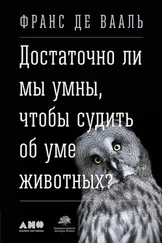

![Дебра Мерк - Девочка в гараже [Реальная история приемной мамы] [litres]](/books/389624/debra-merk-devochka-v-garazhe-realnaya-istoriya-prie-thumb.webp)
![Корен Зайлцкас - Мама, мама [litres]](/books/391290/koren-zajlckas-mama-mama-litres-thumb.webp)
![Елена Бурьевая - 5 секретов не кричащей мамы [litres]](/books/392625/elena-burevaya-5-sekretov-ne-krichachej-mamy-litres-thumb.webp)
![Адриана Имж - #Щастьематеринства [Пособие по выживанию для мамы] [litres]](/books/396962/adriana-imzh-chastematerinstva-posobie-po-vyzhivan-thumb.webp)
